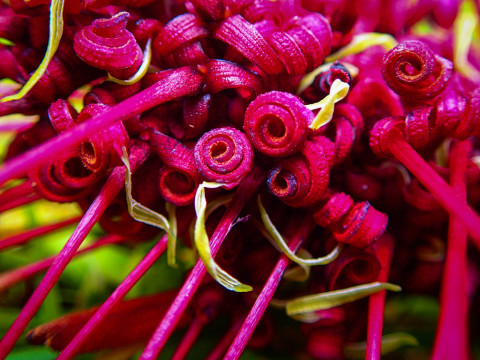The completion of the native rewarewa tree (Knightia excelsa) high quality genome demonstrates how Aotearoa is leading genomics for its native species.
Native species like rewarewa are important to our environment and have taonga significance. They also provide a rich resource for honey production.

Rewarewa flower. Photo credit: Alex Fergus
Rewarewa, only found in Aotearoa, occurs mostly in the North Island and the top of the South Island, and is common in coastal, lowland, and lower montane habitats. Bees are also attracted to rewarewa and produce a delicious honey - described as “dark, malty, and complex with a sweet finish.”
The Genomics Aotearoa collaboration between Manaaki Whenua - Landcare Research, Plant & Food Research and University of Otago has developed an impressive set of techniques benchmarking genomic solutions which are useful for the Aotearoa genomics research community and internationally.
A genomic resource for Māori honey producers
The rewarewa genome is now being used to better understand Rewarewa biology. The goal is to enable the burgeoning rewarewa honey industry to commercialise their product based on its whakapapa (provenance), as has been done for mānuka.
Establishing a high-quality genome for this taonga species has specific cultural importance to Māori. This tree has several traditional uses including medicinal, spiritual, and in building construction. The bioinformatics processes developed through this research are also adaptable to conservation projects.
The research may contribute a deeper understanding of which genes contribute to adaptation of this species to a range of climatic conditions, a question that is of critical importance in times of rapid climate change.